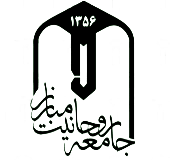| ||||
83 Seats in Assembly of Experts 54 seats needed for a majority | ||||
| Registered | 31,280,084 [1] | |||
| Turnout | 37.09% [1] | |||
| ||||
| ||||
The second Iranian Assembly of Experts election was held on October 8, 1990 to elect all 83 members in 24 constituencies. [1] The election was the first election of the assembly since Ayatollah Khomeini's death and election of Ali Khamenei as the new Supreme Leader. [2] This election had the lowest turnout in the history of the Islamic Republic of Iran with 37.09% of the eligible voters participating. [3]

The Assembly of Experts —also translated as the Assembly of Experts of the Leadership or as the Council of Experts— is the deliberative body empowered to designate and dismiss the Supreme Leader of Iran. However all directly-elected members after the vetting process by the Guardian Council still have to be approved by the Supreme Leader of Iran before gaining membership to the Assembly of Experts.

Sayyid Ali Hosseini Khamenei is a marja and the second and current Supreme Leader of Iran, in office since 1989. He was previously President of Iran from 1981 to 1989. Khamenei is the second-longest serving head of state in the Middle East, as well as the second-longest serving Iranian leader of the last century, after Shah Mohammed Reza Pahlavi.
Out of 180 individuals registered to run, 109 (60.55%) were qualified by the Guardian Council. [1] The council disqualified many left-wing clerics including Mehdi Karroubi, Sadegh Khalkhali, Ali Akbar Mohtashamipur, Hadi Khamenei and Asadollah Bayat-Zanjani. [4] As a sign of protest, the leading leftist party Association of Combatant Clerics decided not to endorse any candidate and some withdrew from the elections, most notably Mohammad Mousavi Khoeiniha. [5]

The Guardian Council of the Constitution is an appointed and constitutionally mandated 12-member council that wields considerable power and influence in the Islamic Republic of Iran.

The Iranian reformists are a political faction in Iran that support former President Mohammad Khatami's plans to change the Iranian political system to include more freedom and democracy. Iran's "reform era" is sometimes said to have lasted from 1997 to 2005—the length of Khatami's two terms in office. The Council for Coordinating the Reforms Front is the main umbrella organization and coalition within the movement; however, there are reformist groups not aligned with the council, such as the Reformists Front.

Mehdi Karroubi is an Iranian Shia cleric and reformist politician leading the National Trust Party. He was the speaker of the parliament from 1989 to 1992 and 2000 to 2004, and a presidential candidate in the 2005 and 2009 presidential elections.
During elections, some candidates tried to argue that the assembly was authorized to exercise continuous supervision over the Supreme Leader's policies and activities. In practice, however, the assembly had exercised no such mandate. [2]

The Supreme Leader of Iran, also referred to as Supreme Leader of the Islamic Revolution, but officially called the Supreme Leadership Authority, is the head of state as well as the ultimate political and religious authority of the Islamic Republic of Iran. The armed forces, judiciary, state television, and other key government organizations are subject to the Supreme Leader. The current longtime officeholder, Ali Khamenei, has been issuing decrees and making the final decisions on economy, environment, foreign policy, education, national planning, and everything else in Iran. Khamenei also makes the final decisions on the amount of transparency in elections, and has dismissed and reinstated presidential cabinet appointees. The Supreme Leader directly chooses the ministers of Defense, Intelligence and Foreign Affairs, as well as certain other ministers, such as the Science Minister. Iran's regional policy is directly controlled by the office of the Supreme Leader with the Ministry of Foreign Affairs' task limited to protocol and ceremonial occasions. All of Iran's ambassadors to Arab countries, for example, are chosen by the Quds Corps, which directly report to the Supreme Leader.
In politics, a mandate is the authority granted by a constituency to act as its representative.
Ahmad Khomeini, Mohammad-Taqi Mesbah-Yazdi and Mohammad Yazdi were among the newly elected members of the assembly. [6]

Sayyid Ahmad Khomeini was the younger son of Ayatollah Ruhollah Khomeini and father of Hassan Khomeini. He was the "right-hand" of his father before, during and after the revolution of Iran. He was a link between Ruholah Khomeini and officials and people. He had several decision-making positions.

Ayatollah Taqi Misbah, commonly known as Muḥammad–Taqi Misbah Yazdi is an Iranian Twelver Shi'i cleric and principlist political activist who unofficially leads Front of Islamic Revolution Stability.

Mohammad Yazdi is an Iranian cleric who served as the head of Judiciary System of Iran between 1989 and 1999. In 2015, he was elected to lead Iran's Assembly of Experts, defeating Akbar Hashemi Rafsanjani, a former president, by a vote count of 47 to 24.








